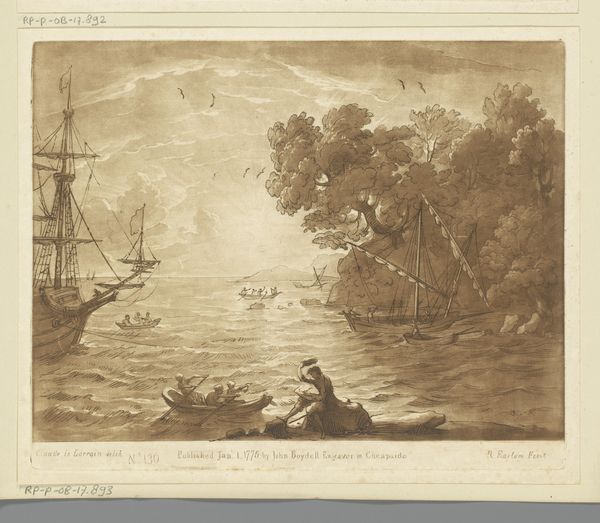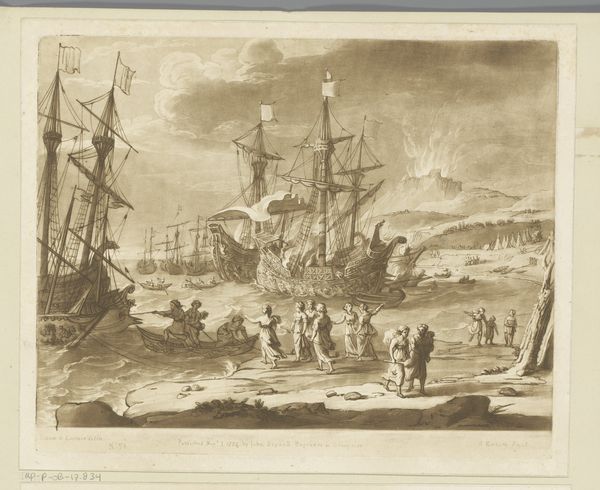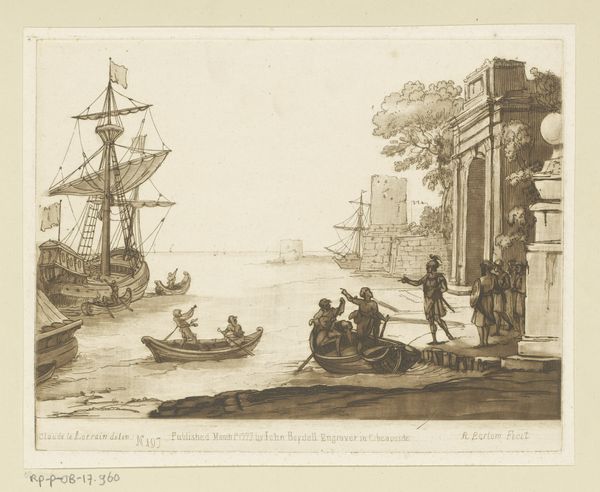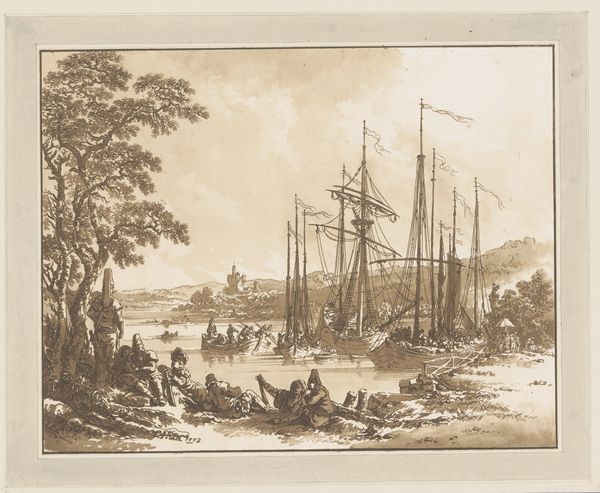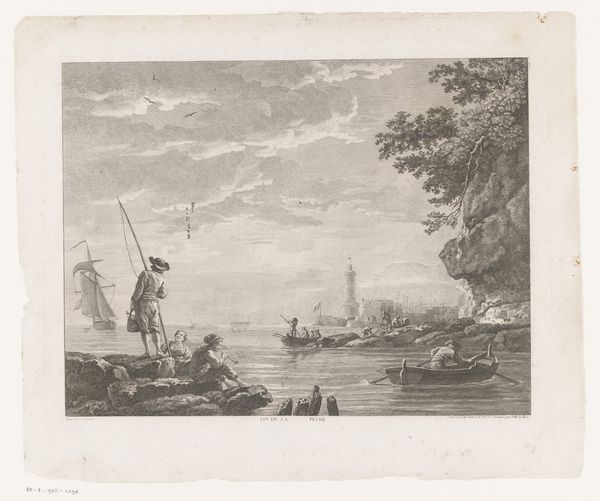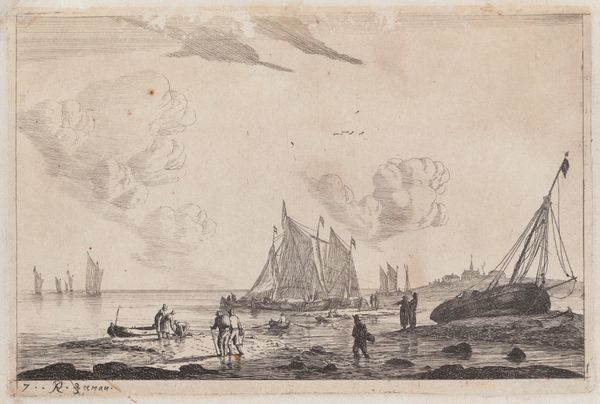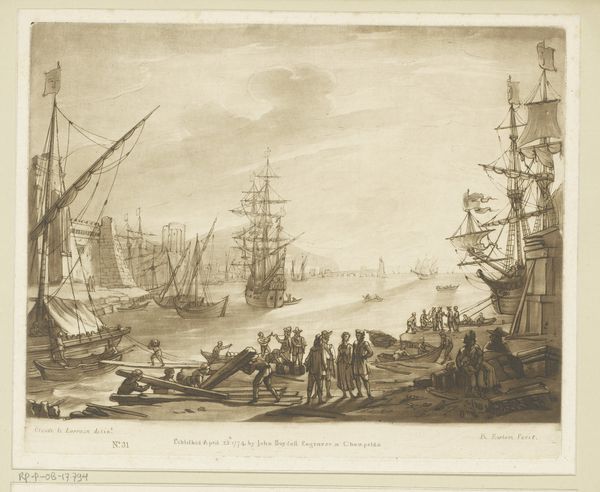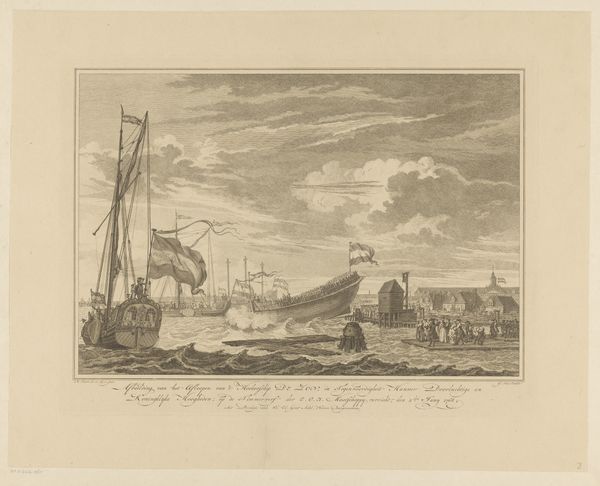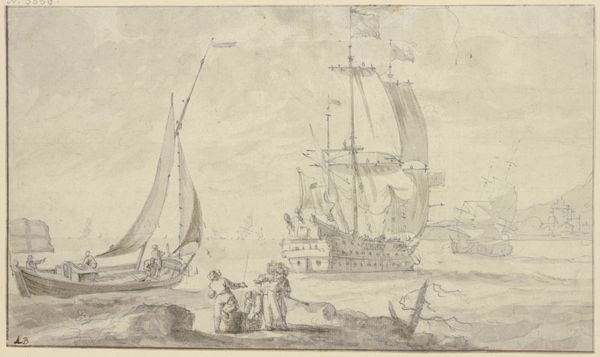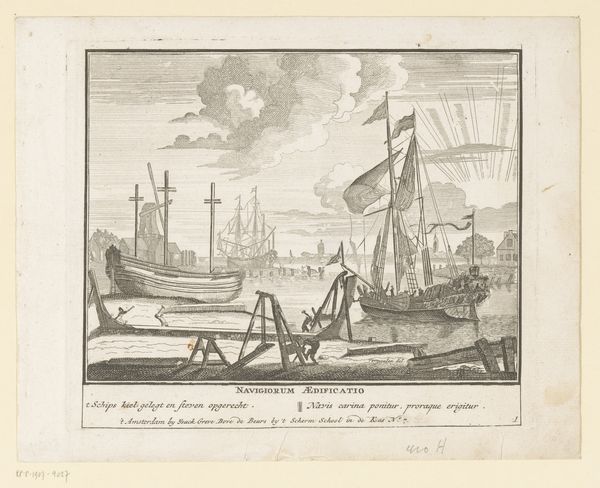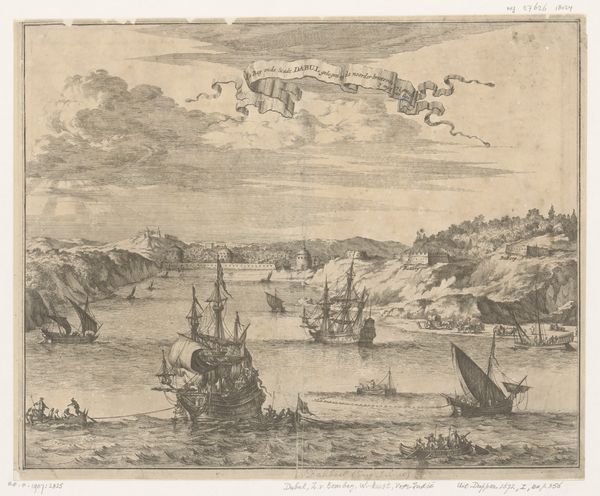
Dimensions: height 206 mm, width 257 mm
Copyright: Rijks Museum: Open Domain
Editor: So, this is Richard Earlom's "Coastal View with the Landing of Aeneas in Latium," probably from 1776. It's an engraving, and it feels like such a romanticized view of history. What strikes you most about this piece? Curator: The historical context of this print is very important. It depicts a classical subject—Aeneas’s arrival in Italy—but it’s filtered through 18th-century eyes. Consider the fascination with the antique world during this era. Prints like these circulated widely, shaping perceptions of history. How does this inform the politics of imagery? Editor: I guess it makes sense that popular engravings would be a way to promote certain values. Like, the glory of Rome connecting to contemporary empire-building, or something? The grandeur here feels deliberately staged. Curator: Precisely. Earlom is not simply reproducing a historical event, he's constructing an idealised past. These works served a pedagogical purpose, displaying stories and ideals for a growing public increasingly interested in culture and education. Also, note the subtle ways nature is both a backdrop and a signifier of divine providence and Roman virtues. It promotes this classical subject to a wide audience that might not see the subject portrayed elsewhere. What values did the public at the time take away from it? Editor: Maybe ideas of destiny and rightful conquest? The way everything's bathed in a soft, almost divine light... it makes me wonder about the power dynamics embedded within images that are presented as objective representations of history. I definitely see that pedagogical purpose at play. Curator: And reflecting on those dynamics can really transform our reading of historical narratives presented in art.
Comments
No comments
Be the first to comment and join the conversation on the ultimate creative platform.
